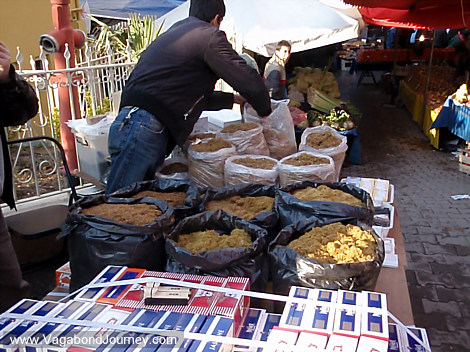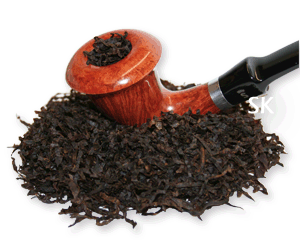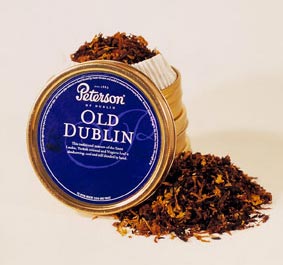Ok where was I.. Oh yes! Oriental tobacco. (Click here for part 1.)
Tobaccos grown in Turkey
The three principal tobacco growing areas of Turkey are:
1. The Aegean zone – Izmir
2. The Black Sea zone – Samsun Baffra
3. Marmara and Thrace – Brussa
It should be remembered that within each type there are several grades. Also, the tobaccos that bear the same names as their Greek cousins are quite similar. They have the same basic aroma, nicotine content and burning and other qualities.
Smyrna (lzmir)
Izmir tobacco constitutes a very large part of the entire Turkish tobacco crop. No wonder because it is one of the most well known oriental tobaccos. It has a very small leaf with a small vein construction and a low nicotine content. The color varies from light green to pale gold and it is very sweet and lightly aromatic. It is excellent for blending because it “marries” with practically any other type of tobacco.
Samsun-Maden (Samsun tobacco grown in the Black Sea area)
Real Samsun, which cannot be successfully grown in any other part of the world, is considered by the Turks to be among the world’s finest tobaccos. It has a small leaf, is light in colour and has an extremely fine texture. It is generally used in pipe tobacco of superior quality.
Baffra
Basically the same type tobacco as Samsun. Baffra tobacco has small, red or darker brown leaves of fine texture and it gives off a very pungent odor. It is not quite as fine a tobacco as Samsun and is usually used to give flavor and aroma to all blends.
Trebizond
The other Trebizond tobacco has large, light red leaves of fine texture. Its taste is strong and it is very aromatic. The leaves are usually “topped” in the growing, which adds to their size and to their nicotine content. Most Trebizond is grown for local (Turkish) consumption.
Tobaccos grown in former Yugoslavia
This region produces many varieties of oriental tobacco. The most outstanding are Prilep, Yakka and DjebeI. All three are Basma types and the most popular and widely-produced is the Prilep variety. The Yakka tobaccos are more delicate and are very similar to Greek Basmas. The Djebels are grown in rather restricted quantities and are very similar to the Bulgarian Djebels.
Tobaccos grown in the Black Sea zone
In areas surrounding the Black Sea, Georgia produces Sukhum (Sokhoum) tobacco, a strain from the Samsun seed. Grown in and around Sukhumi, some experts consider it the finest oriental grown anywhere.
Tobaccos grown in Bulgaria
Bulgaria produces in its Macedonian area oriental tobaccos (like Djebel) that are similar to the Basma and Bashi Bagli types of Greece.
*Phewww* ok, that were the different species of oriental tobaccos. In the older days they were widely used in pipe tobacco. Nowadays they are rare. No I say that wrong, they are not rare. Nowadays specific oriental tobaccos are hard to get. The real issue is the quantities pipe tobacco manufacturers have to purchase in order to get them. Most of the tobacco farmers in the regions I mentioned also grow other crops. Tobacco isn’t their only, or even their main source of income. Most produce only about 1000 kg or less per year. A lot in our ears, but not in tobacco manufacturer ears. Much of that 1000 kg is used in the production of local cigarettes. Almost all what is left gets mixed and piled up together and is sold to the big cigarette companies. The scraps often go to pipe tobacco companies. And many scraps of oriental tobacco still make… Oriental tobacco. That is why in many current mixtures an unnamed assortment of the exotic leaf is used.
Let´s quote master-blender GL Pease on this: If I wanted to get a container full of any particular variety, about 4.5-tonnes, it would be possible to do so, but consider the fact that there the US pipe tobacco market, overall, is only about 1600-tonnes, and the vast majority of that is OTC aromatics. That container full of Turkish leaf, used in a mixture that may comprise 15% oriental, would yield about 30-tonnes of finished product. It would take a lot more decades than I have left to recover the investment!
So he is bound to what a tobacco broker can offer him, instead of him buying specific oriental tobaccos.
This is kind of logical but oriental tobaccos are sun cured. The leaves are exposed to the sun to remove most of their moisture before being air cured to complete the process. Then they are stored in bales and allowed to ferment.
Now something about the use of oriental tobaccos in a blend. Orientals can have flavours that range from sweet to musty to buttery to floral. Since most of them have a pronounced flavour a little can go a long way. According to a German master-blender 30% on the whole of a mixture is the maximum. I would say that 25% is enough. But if you like a specific oriental you can also smoke it straight although I don’t recommend that. Together with some Virginias they really sing. If you smoke it in a blend halfway the bowl the oriental taste often is the strongest.
Recommended mixtures with lots of orientals are:
– Balkan Sobranie Original Smoking Mixture (by J.F. Germain)
– Dunhill: Early Morning Pipe*
– GL Pease: Cairo, Embarcadero, Caravan, Ashbury
– HU Tobacco Joschi’s Oriental Sunrise
– McClelland: Bulk No. 2025 English Cavendish, Bulk No. 2045 Oriental Mixture, Bulk No. 2050 Oriental Cavendish Mix, Bulk No. 2020 Matured Cake, Bulk No. 2030 #1 Grade Balkan, Oriental No. 12, Oriental No. 14, Grand Orientals series (a great way to get to know almost extinct orientals)
– McConnell: Old London Pebblecut (formerly made by Ashton), Oriental
– Peter Stokkebye: Balkan Sasieni, Balkan Supreme
– Presbyterian Mixture
– Samuel Gawith: Skiff Mixture, Sam’s Flake
– Tabaco Sentimiento Nacional Mezcla Oriental Fuerte
* Available in The Netherlands












